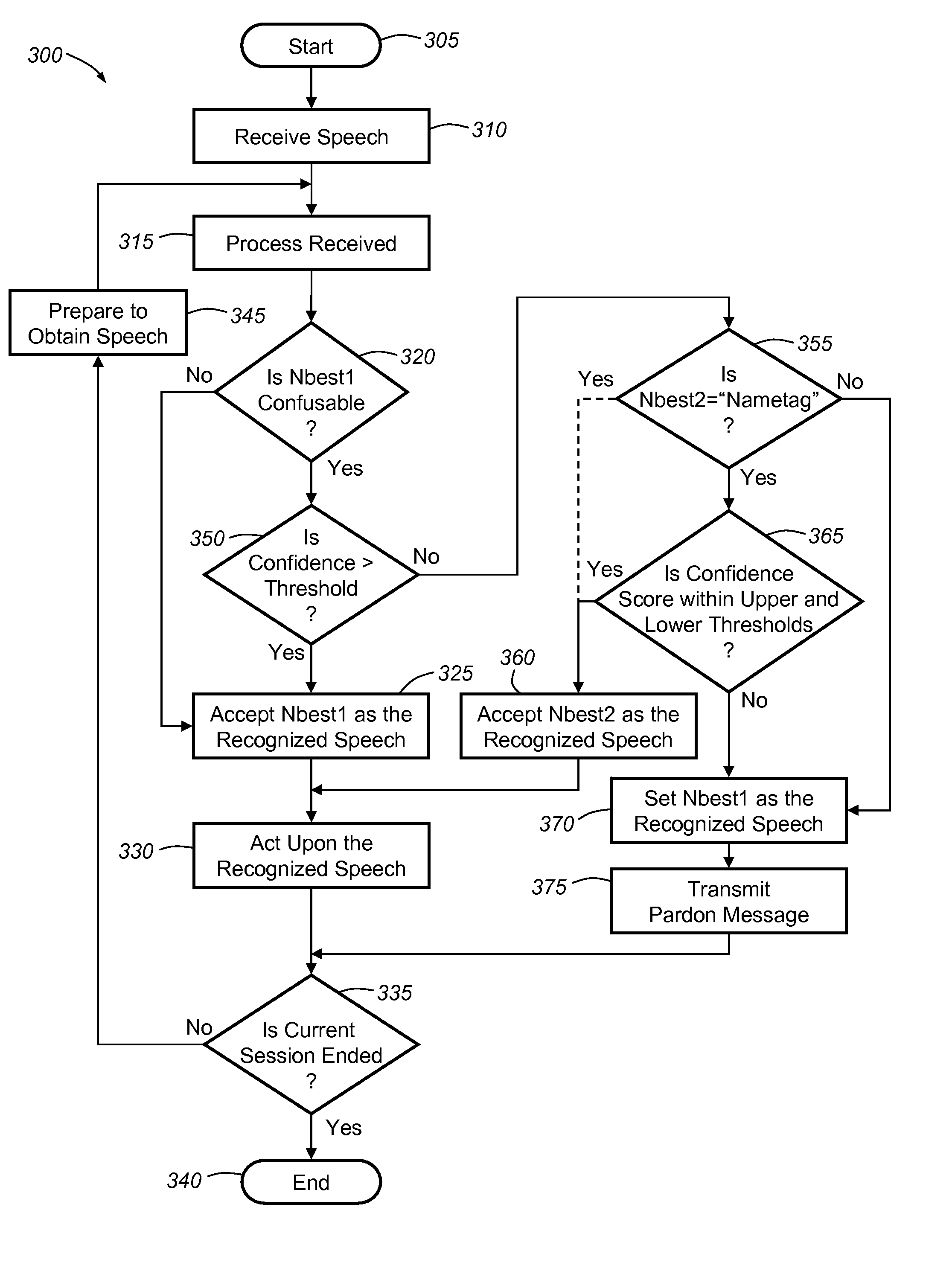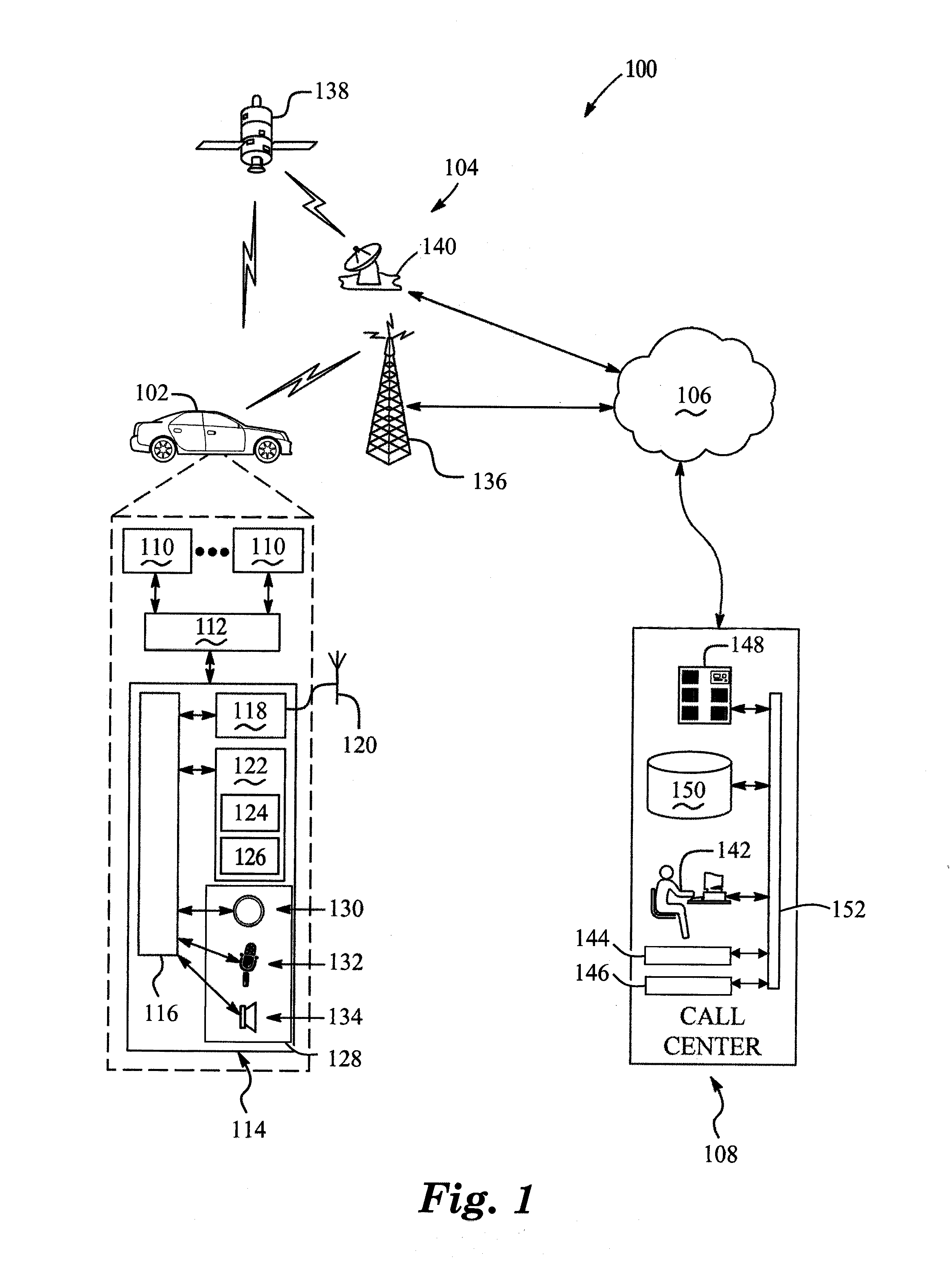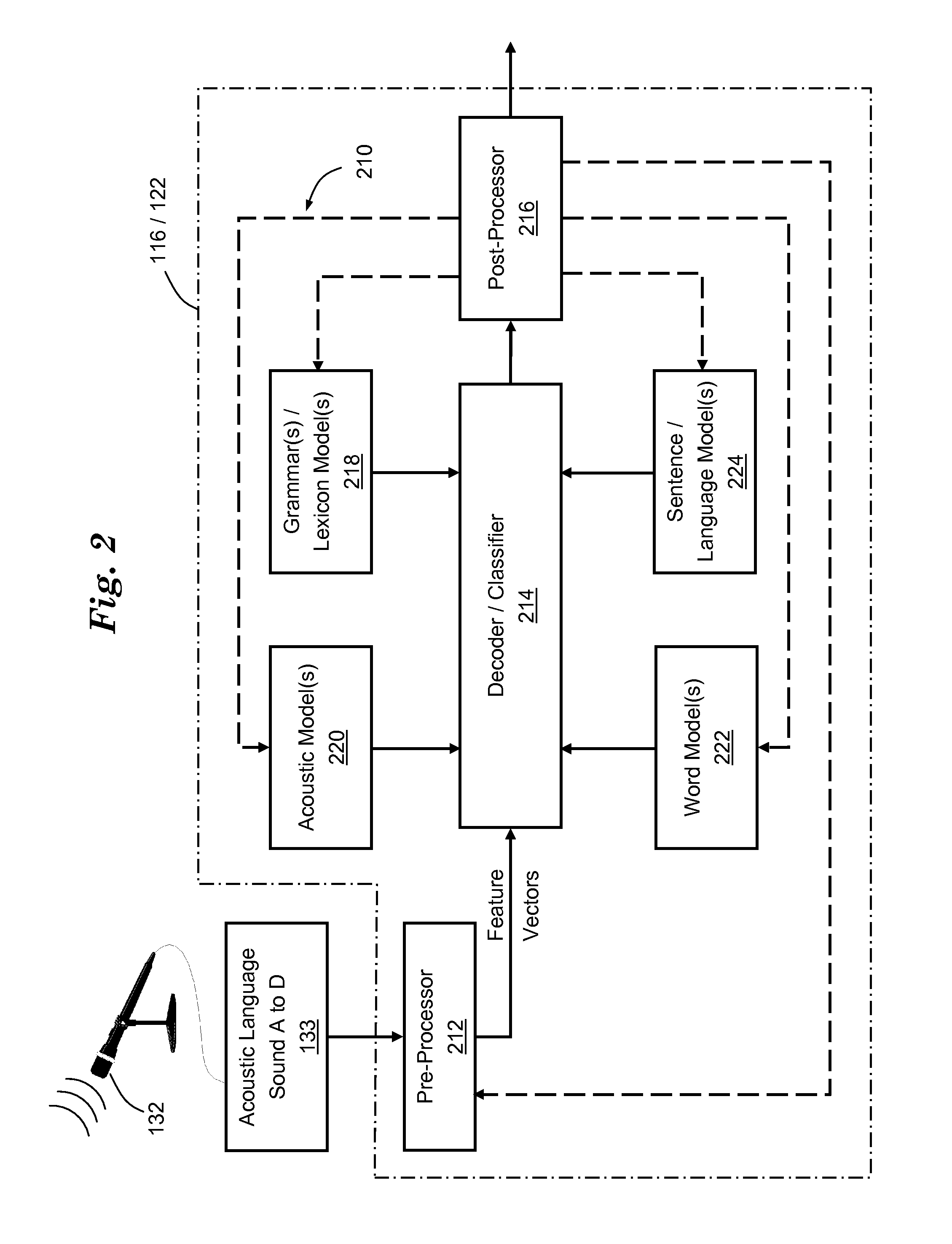Correcting substitution errors during automatic speech recognition
a technology of automatic speech recognition and substitution errors, applied in the field of automatic speech recognition, can solve the problems of rejection errors, insertion errors, and sometimes misrecognizing user's intended input speech by asr systems,
- Summary
- Abstract
- Description
- Claims
- Application Information
AI Technical Summary
Problems solved by technology
Method used
Image
Examples
Embodiment Construction
[0020]An exemplary operating environment is illustrated in FIG. 1, and can be used to implement a presently disclosed method of automatic speech recognition wherein substitution errors are corrected. The method can be carried out using any suitable telematics system and, preferably, is carried out in conjunction with a vehicle telematics system such as system 100. Those skilled in the art will appreciate that the overall architecture, setup, operation, and individual components of the system 100 are generally known in the art. Thus, the following system description simply provides a brief overview of one such exemplary telematics system, but other systems and components not shown here could also support the presently disclosed method.
[0021]The exemplary telematics system 100 includes a vehicle 102 for carrying one or more occupants or users, and a wireless communication system 104 for providing wireless communication to and from the vehicle 102. Also, the system 100 can include a se...
PUM
 Login to View More
Login to View More Abstract
Description
Claims
Application Information
 Login to View More
Login to View More - R&D
- Intellectual Property
- Life Sciences
- Materials
- Tech Scout
- Unparalleled Data Quality
- Higher Quality Content
- 60% Fewer Hallucinations
Browse by: Latest US Patents, China's latest patents, Technical Efficacy Thesaurus, Application Domain, Technology Topic, Popular Technical Reports.
© 2025 PatSnap. All rights reserved.Legal|Privacy policy|Modern Slavery Act Transparency Statement|Sitemap|About US| Contact US: help@patsnap.com



